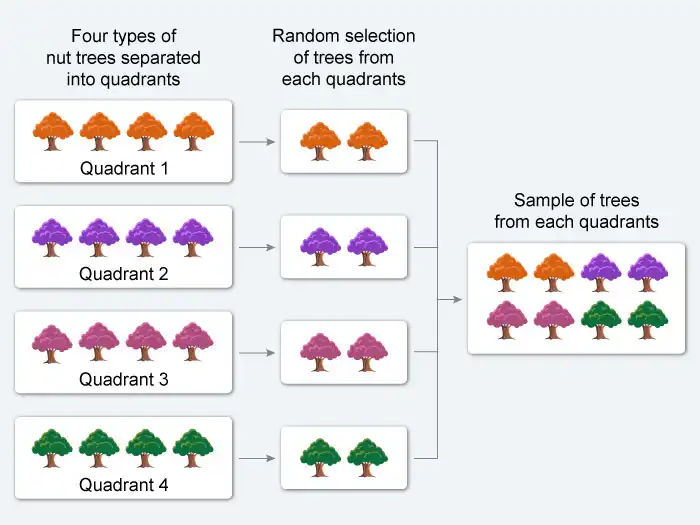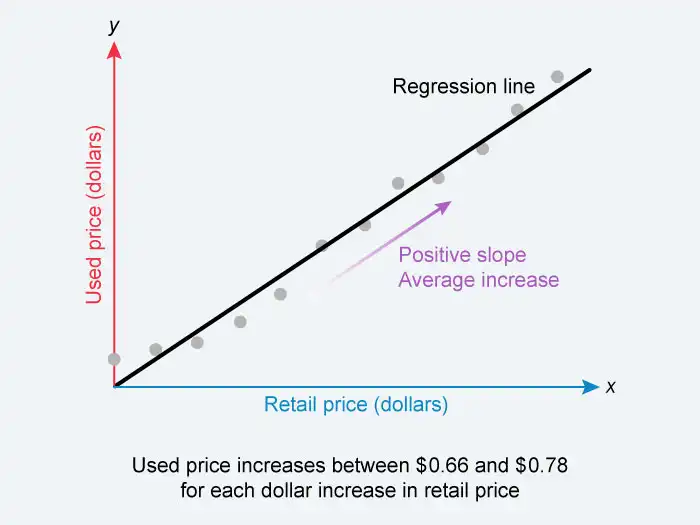AP® Statistics Study Guide
If you are reading this AP® Statistics study guide, you are already on the right track for your upcoming AP Stats exam. This step-by-step guide is here to help you learn the problem-solving strategies and analytical and writing skills to make your preparation hassle-free. By the end of this article, you will be able to prepare a study schedule tailored to your requirements that lets you prep smarter and faster for your upcoming AP Statistics exam.
How To Study for the AP Statistics
The AP Statistics course is comparable to a one-semester, non-calculus-based college course in introductory statistics. From the moment you sign up for an AP Statistics course to exam day, you can take the following steps to prepare and improve your chances of getting the score you want.
How to prepare for the AP Statistics course
As the saying goes, “well begun is half done”. If you prepare beforehand, each course unit will be easier and quicker to learn. Moreover, you will have some progress to make if you ever fall behind. But once you have signed up to take an AP Statistics class, it can be challenging to figure out how to prepare. What now? Here are some things you can do before the school year starts.
- Make sure you can meet the prerequisites for the course
- Completion of a second-year course in algebra
Bonus points for geometry and precalculus, although calculus is not required for the exam.
Once you meet those prerequisites, here are some things you can do to prepare during the summer before taking the course.
- Familiarize yourself with the College Board®’s AP Statistics course exam and description.
- Talk with teachers and other advisors. Your statistics teacher can tell you about the expectations of the class. Your guidance counselor may also be able to tell you about the rigor of the course.
- Brush up on algebra concepts. Specifically, focus on algebraic manipulations, linear equations, inequalities, graphs, functions, exponential functions, logarithms, and probability.
- Identify learning materials that work well with your learning strategies and lifestyle. These can be textbooks (online and paper), study guides, videos, apps, practice problems, etc. We highly recommend our test bank as an efficient way to prepare for the course and exam.
- Study Unit 1 concepts and practice some UWorld AP Statistics questions for that unit. Most of the material should be a review of the algebra and other math courses you have taken.
How to pass a Statistics class
AP Statistics is focused on four main concepts:
- Exploring data (Units 1-2 )
- Sampling and experimentation (Unit 3 )
- Probability and Simulation (Units 4-5 )
- Statistical Inference (Units 6-9 )
Here are some tips for passing an AP Statistics class:
- Practice and review every day. At least 30 minutes a day is recommended. Plan your study hours with an efficient and structured schedule.
- Flashcards are an efficient tool to learn and memorize AP Statistics basic terms and concepts.
- Practicing multiple-choice questions is perhaps the most efficient way to study AP Statistics. Get that practice with UWorld multiple-choice questions.
- Practice free-response questions from tests from past years because they can be repetitive from year to year. Analyze the scoring guidelines to understand expectations.
- Always set aside some time to revisit previous units. Occasional review of materials effectively prevents your knowledge from becoming rusty.
- Ask the teacher for help and suggestions on how to improve; they will be happy to assist you and may be able to identify specific growth areas.
How to Do Well on the AP Statistics exam
While every class is different and it depends on circumstances, doing well in your AP Statistics course and following the steps gives a solid foundation for achieving a 3 on the exam. In 2021, a little under 60% of students achieved a score of 3 or greater on the exam.
But if you are confident you can master the basics and want to shoot for a 4 or 5, you will need more time preparing and need to be efficient in how you study. Unit 1 represents the most significant weight on the exam (15-23% of the exam). Still, Units 4, 6, and 7 should also be your focus because they also represent a large proportion of the exam content.
Improving your score from 3 to 4 requires you to improve from being “Qualified” to “Well Qualified”. Here are some tips to improve your score from 3 to 4. In addition to the steps above:
- Increase practice time to 45 minutes every day.
- Review your notes every day, for that day and the previous day’s class.
- Around Spring Break, create a study plan for reviewing the course content (see below).
- Increase the number of UWorld AP Statistics multiple-choice questions you practice every day.
- Increase practice of FRQs with AP Classroom and the ones the College Board provides. Keep an eye out for commonly asked questions and emphasize them.
- One month before the exam, increase study time to 1.5 hours a day.
- Ask the teacher for help and suggestions on how to improve; they will be happy to assist you and may even identify specific growth areas.
How to Score a 5 on the AP Statistics Exam
A key thing to understand if you want a 5 on the AP Statistics exam is that you do not need to get every single point on the exam. Only two of the 183,181 students who took the 2021 exam answered every multiple-choice question correctly and received perfect scores on all six free-response questions. You do not even need to get 90%—the requirement for an A on an exam in the US school system. Do not try to be perfect; maximize your points on the things you know well, and on anything else, try to eliminate answer choices and make an educated guess if it is taking too long.
Knowing where to spend your study time is vital. For example, understanding that the formulas on the exam are mostly derived from one of several general formulas (e.g. general test statistic formula). One MCQ is not worth a lot, so if you are struggling to remember the formula, practice a few UWorld questions and make a flashcard with the formula to quiz yourself occasionally, but do not spend too much time on it. You will get more out of focusing on more critical concepts.
Here are some AP Statistics study tips to help you earn that coveted 5, in addition to the steps to earn a minimum of 3:
- Be prepared to practice for 45 to 60 minutes every day.
- Further, increase the number of UWorld AP Statistics multiple-choice questions you practice every day. UWorld develops questions to track well with the overall themes in the multiple choices that are used.
- Practice more FRQs emphasizing frequently tested questions.
- Keep track of concepts you have trouble with. Consider asking your teacher for extra clarification on those topics, and practice more problems in those areas.
By Spring Break:
- Increase study time to 1.5 to 2 hours per day.
- Time yourself on FRQs based on the timing of each section on the exam. If you find yourself running out of time, identify the concepts and question types that take you the longest.
Which Units are the Most Challenging?
According to the College Board, the most challenging units on the 2021 exam were Unit 4 (Probability) and Unit 5 (Sampling Distributions), both of which focus on the concept of probability. Moreover, these units represent a large portion of the questions on the AP Statistics exam.
In general, probability is a difficult topic for students to understand. Luckily, repeated practice does wonders for doing well with questions involving probability. Memorization of specific factors or formulas is less important for probability problems. There are often several ways to solve a given probability problem, and once you find the strategies that work best for you, you can apply them in novel situations.
That being said, there are particular types of probability problems that UWorld has identified as being particularly important to study because they show up often and are often missed by students.
For Unit 4:
- Calculating probabilities for independent events and for the union of two events
- Calculating probabilities for binomial and geometric variables
- Calculating parameters (mean, standard deviation) for linear transformations
- Calculating parameters (mean, standard deviation) for linear combinations
For Unit 5, students tend to perform poorly on questions that require interpreting the calculations rather than the formulas themselves.
How to Self-Study for the AP Statistics Exam
If you plan to self-study for the AP Statistics exam without taking an AP course, you may have a few more obstacles and challenges ahead. However, it is definitely doable. The biggest challenge will be not having a teacher introduce concepts and help you improve. So your first step is to find out what learning style works best for you.
Ask yourself if you learn well from practicing questions, watching videos, or reading a textbook? Most students learn from a combination of these approaches, so try different things and see what works best for you. Our recommendation would be to incorporate all of them. Here’s a general flow you can use to facilitate your learning process:
- Watch a video on a topic and take notes.
- Rewatch the video if the topic still isn’t clear, or watch a similar video from another source. Sometimes, hearing or seeing a concept presented in multiple ways can help clear up confusion.
- Read a textual explanation of the topic and add it to your notes.
- Work practice problems on the topic. Use the UWorld AP Statistics QBank, read through our explanations, especially on questions you answer incorrectly. We also include hyperlinks to general explanations of concepts or alternate/more detailed solutions, so we encourage you to explore those as well.
- Review your notes at the end of your study session.
This flow may or may not work for you. Experiment and figure out what elements to incorporate into your study plan. See the next section for tips on creating a study plan that is right for you.
AP Statistics Exam Study Schedule
Now it is Spring Break (or later), and it is time for the full-court press. No matter your time frame, we have got a schedule for you to prepare for the AP Statistics exam.
| Week 1 | Study Unit 1
Every Day
|
| Week 2 | Study Units 2 and 3
Every Day
|
| Week 3 | Study Units 4 and 5
Every Day
|
| Week 4 | Study Unit 6
Every Day
|
| Week 5 | Study Units 7,8, and 9
Every Day
|
| Weeks 6-9 | Mix Units
Every Day
|
| Every Day of the Week |
|
| End of the Week |
|
If you only have one month until the exam, you still have enough time to prepare. Like the 2-month schedule, you will want to start with a general review of the course topics, unit-by-unit, but at a much quicker pace. Use your textbook and class notes if you need refreshers on the concepts, but spend most of your time completing your textbook practice problems or the UWorld QBank.
| Week 1 | Study Units 1, 2, 3, and 4 Every Day
|
| Week 2 | Study Units 5, 6, 7, 8, and 9 Every Day
|
| Weeks 3-4 | Mix Units Every Day
|
| Every Day of the Week |
|
| End of the Week |
|
With a 2-week schedule, time is much more limited. For the first week, practice a few UWorld MCQs in each topic to find problem areas, read through the explanations, and review your class notes in those areas. If necessary, find a video or read your textbook on a topic if it is not sticking. After reviewing the problem area, try some more UWorld questions to see how you have improved.
For the second week, spend most of your time practicing FRQs. FRQs hit many topics simultaneously, so they are a very time-efficient way to practice the course material. They also often require you to show your steps, so they are a great way to emphasize the entire process of answering questions.
| Week 1 | Multiple Choice Questions Every Day
|
| Week 2 | Free Response Questions Every Day
|
| Every Day of the Week |
|
| End of the Week |
|

AP Statistics Review/Study Materials
Please write about the study materials and include content about the UWorld’s Qbank


